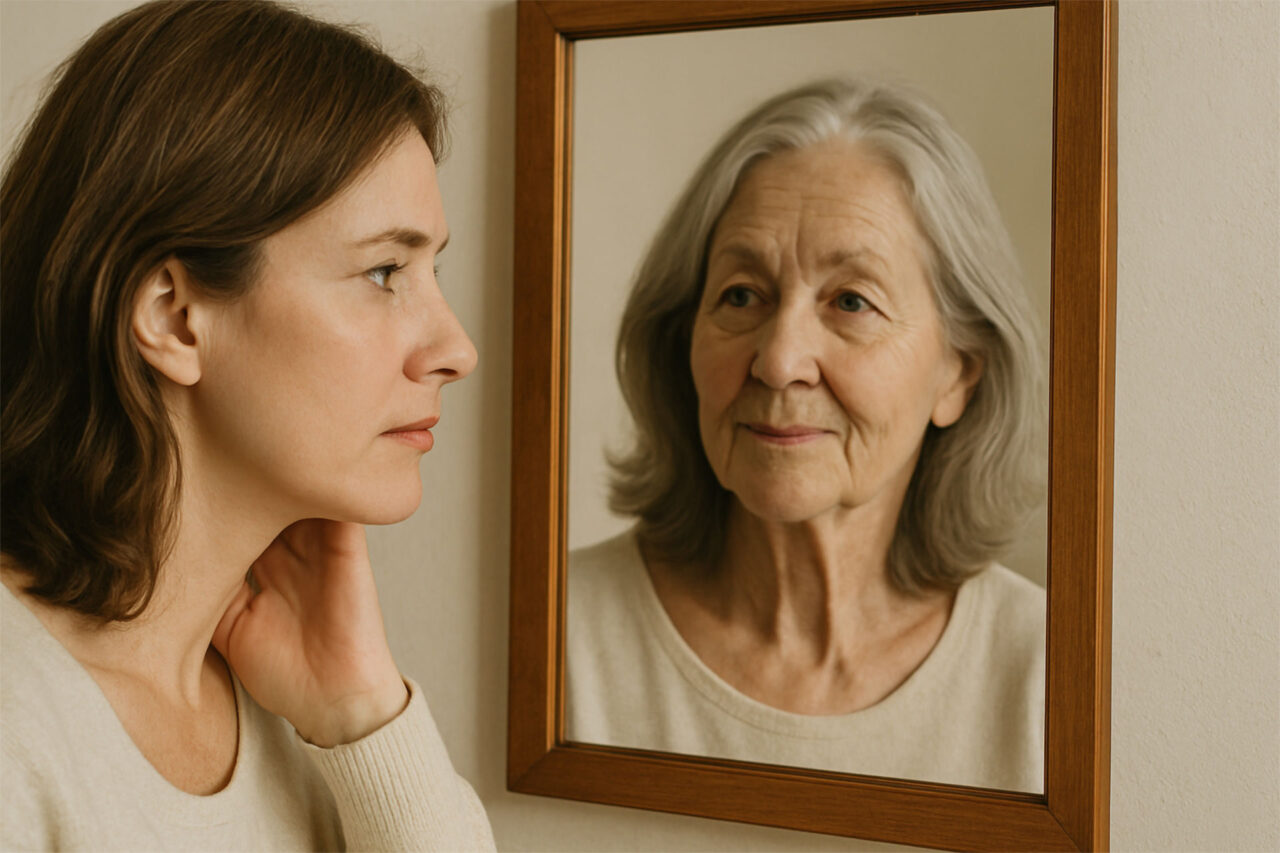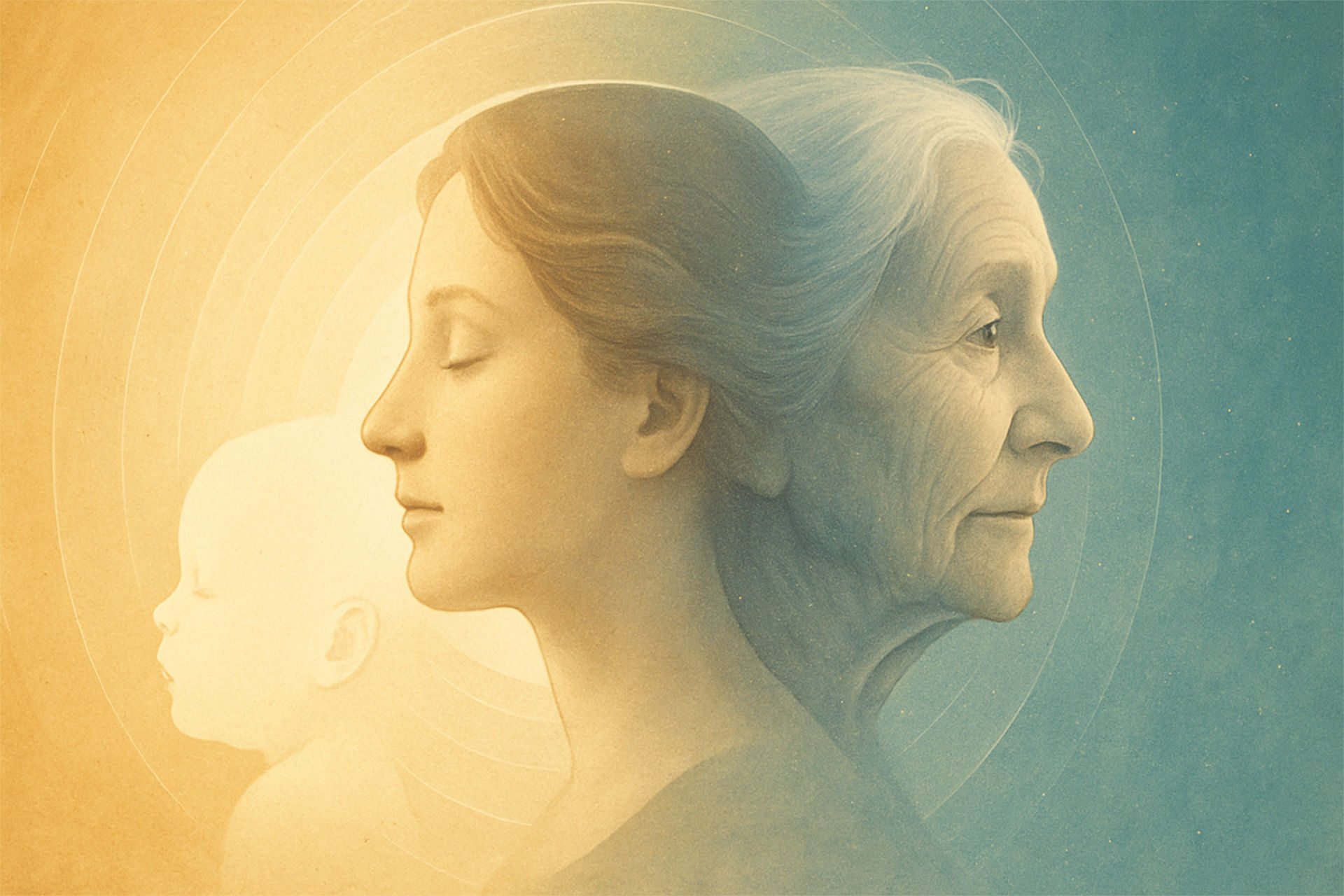Who Do You Think You Are?
I was looking at the crepe-like skin on my neck and the slightly sagging jowls of my face the other day. I looked in the mirror and felt like I looked “older.” People say that I look young for 55, but I am starting to see the old woman emerge. I am not afraid of her—in fact, I welcome her. I suspect the older me will be sassier and more creative, and hopefully ever more content.
But this aging thing…it’s interesting, isn’t it? For some, this is frightening. We fear the changes that naturally come with aging. While slow to emerge, these changes remind us of dying and death. As our bodies age, we realize we’ve got more years behind us than in front of us.
I find this particularly interesting in light of all the research that has been done to determine the life cycles of different types of cells in the body. The fact is, none of us are who we thought we were years ago—or even days ago. Look at this table to see how quickly our body replaces certain types of cells:

Was I “ME” when I was a baby? Where is that body now? Was I “ME” when I was a teenager? Where is THAT body? Will I still be me if I live into my 80’s or 90’s? What will THAT body look like? We don’t have the same physical body we had yesterday at any point in our lives.
There’s an old philosophical thought experiment called the Ship of Theseus: if you replace every single part of a ship, plank by plank, is it still the same ship? Or has it become something entirely new?
Science shows us that we are not made of static parts, but of patterns—processes in motion, constantly assembling and dissolving. We are not so much “things” as we are “events,” happening over time. And yet throughout all this movement, we hold on to a sense of singular identity. A name. A face in the mirror. A feeling of being “me.”
But that’s not all! In 2018, the BBC published an article by James Gallagher explaining that our bodies are less than 50% human. The rest of us is made up of other organisms such as bacteria and parasites. Wow. Just…wow.
We are not one solid individual identity. We are a thriving metropolis of physical matter. Makes you wonder (between cells dying and being replaced and not being very human to begin with) if we really exist the way we think we do! As we consider all these factors, we might also need to consider that there is a grand illusion happening.
As a death doula, I spend time with people at the edges of life, where such questions don’t feel philosophical—they feel personal. Identity, the body, the fear of loss, the mystery of selfhood—these are not abstract ideas in the space of dying. They are living, existential inquiries. Some of my clients approach this inquiry with childlike curiosity—or on the other hand—sage-like wisdom that comes from having lived a lot and figured some stuff out. Other clients of mine won’t touch this subject with a ten-foot pole. They won’t think of it at all. I don’t judge this. I just find it interesting. I honour and respect both the desire to dive in and dig deep, and the determination to not question anything at all.
The Illusion of Continuity
If the body is always changing, why do we still feel like the same person we were yesterday—or even decades ago? What creates that thread of sameness we carry through time?
Part of it is memory. The mind stitches moments together into a kind of inner narrative—a story we tell ourselves about who we are, where we’ve been, what we’ve survived, and what matters to us. Like pages in a journal, each memory builds upon the last, giving shape to a personhood we can point to. But memory is unreliable. We forget. We rewrite. We imagine. So what is it, really, that gives us this feeling of “I am me”?
We are not a single moment frozen in time. We are continuity within change, awareness within impermanence. Like a candle flame that flickers but does not go out, we remain ourselves—somehow—even as everything else shifts. And still, even knowing that change is constant, we feel like we are steady. We feel like we are just one person, moving through time, tethered to a single name, a single story, a single body.
What if consciousness is not located in the body, but simply accompanies it, or uses it like an astronaut’s suit to experience “reality”?

Facing Death
If we know, deep down, that we are more than our bodies—if we sense that we are something continuous, something aware—why do we still cling so tightly to the body itself?
Perhaps because it’s the part we can touch. The body gives us sensation, pleasure, pain. It’s how we experience sunrise and music, grief and comfort, connection and solitude. Our bodies hold our stories—not just in scars and wrinkles, but in posture, muscle memory, and the way we breathe when we’re anxious or safe.
In the face of death, the body becomes both sacred and terrifying. Sacred because it’s the vessel that carried us through life. Terrifying because it reminds us that we are impermanent. It ages, it fails, it dies. To let go of the body can feel like letting go of everything we’ve known.
Perhaps it’s not death itself we fear, but the unraveling of the story of “me.” The loss of the familiar. The dissolving of the illusion that we were ever solid, unchanging or permanent.
If you are interested in exploring this theme, or learning more about end-of-life, compassionate care, dementia and other important topics, be sure to review my events page or contact me for more information.
Download My Free End-of-Life Glossary
This comprehensive guide will help you navigate the often unfamiliar terminology associated with end-of-life discussions. You’ll also receive valuable insights about once a month. No spam ever; unsubscribe anytime. Download your free glossary today.
